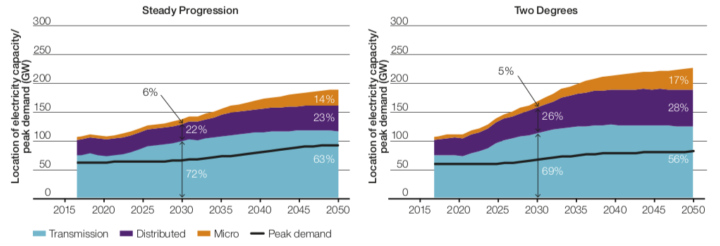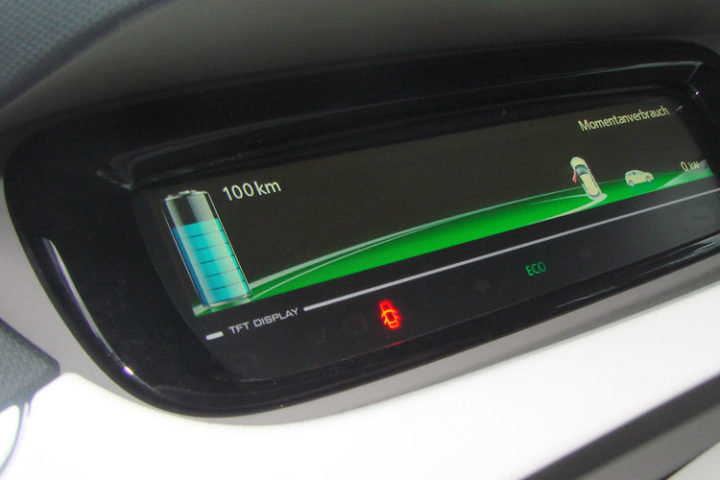Government the slowcoach in energy offerings
Of three major energy and transport visions out this week, government's was the least ambitious
By Richard Black
Share
Last updated:
Three looks at the UK’s energy and transport futures emerged this week, from government, an official advisor and a key company.
And you would have to say that relatively speaking, the company is in the fast lane, the advisor in the slow, and the government pottering along on the hard shoulder.
These days we can legitimately say ‘energy and transport future’ as a single concept, because the two ingredients are so interwoven. Cars driven by electric motors, fuelled from local generation or the national grid, providing balancing and resilience to the grid when they’re plugged in. If this is the system we’re moving towards – and hardly anyone seriously disagrees that we should be – the advantages of planning symbiotic delivery are obvious. Within a decade, home heating will join that duo in a trio as tight as Emerson, Lake and Palmer – but not quite yet.
Dos and don'ts
National Grid put out four scenarios this week of how the UK’s system could evolve. All four keep the lights on, and – interestingly – all of them plan for a big expansion of small-scale, decentralised renewable generation.

But the differences between them are probably more interesting than the similarities – in particular, the differences that mean two of them meet the government’s targets for reducing greenhouse gas emissions while the other two don’t.
Assuming Grid’s analysts are close to being on the money – and they’re as likely to be as any other reputable group – we can pick out several things from the two scenarios that are compatible with the UK’s ambition to continue as a ‘climate change leader’. The ‘should do’ list includes:
- 70% of homes by 2030 should have Class C or better Energy Performance Certificates (EPCs) – currently we're around 30%
- by the same date, 60% of electricity should come from renewables
- by 2024 – within just six years – half of the UK’s electric vehicles should have smart chargers.
And the list of things not to do includes, intriguingly, shale gas. I say ‘intriguingly’ because for years now the term ‘clean gas’ and the line that ‘shale gas can be part of a transition to a low-carbon future’ have been orthodox government-speak. Grid’s point is that it’s not a low-carbon fuel at all – there are genuinely low-carbon gases, including biogas and hydrogen produced by electrolysis using zero-carbon power – but shale gas isn’t one of them.
One point of caution is that Grid’s prescription puts a lot of responsibility on distribution network operators (DNOs) – the companies that run regional and local power lines. Small-scale distributed wind and solar generators, battery storage, EVs hooked up to smart chargers… all of this is sound in principle, but it’s not clear that the DNOs are exactly leading the charge towards the smart, decentralised, low-carbon energy system that the government says it wants – or that regulator Ofgem is putting enough pressure on them to do so.
Smart enough?
The National Infrastructure Commission (NIC) first highlighted the economic benefits of the smart grid a couple of years back, calculating that growing flexibility could shave £8bn per year off the UK’s energy bill by 2030. This week, NIC was back again with a much broader report on the nation’s infrastructure needs.

Interestingly, it was quite a bit less ambitious than National Grid's – in particular, on its headline figure that 50% of UK power should come from renewables by 2030, as opposed to Grid’s 60%.
What most caught the eye, though, was NIC’s presentation of this as an ‘either-or’ with nuclear, not as an ‘as well as’. And this is quite odd, because when you tot up the numbers, NIC’s recommendation that only one new nuclear station be commissioned now, in addition to Hinkley, potentially leaves quite a hole in the UK’s low-carbon generation plans.
The Clean Growth Strategy suggests that by 2032, we should be deriving only 15% of our electricity from gas. By that time, only one of our existing nuclear stations, Sizewell B, is scheduled still to be running. Add in Hinkley and (say) Wylfa, and we get a grand total of 7.3GW of nuclear capacity – somewhat shy of today’s level, enough to deliver about 15% of electricity demand. Add that lot together and you get (50+15+15=)80%... meaning that the remaining 20% would have to be imported from other countries through interconnecting cables.
There’s nothing wrong with free trade in electricity, of course – neither is this figure out of line with BEIS projections. But it’s still a heck of a lot to import – not brilliant for balance of payments. And the unambitious thing about it is that if you take BEIS projections for nuclear build-out – four new stations by 2030 – and add to that National Grid’s projections for renewables, you’re able to meet 100% of net demand from UK generation. There might even be a surplus, which would raise three possibilities, all of them attractive:
- using gas-fired stations for less than 15% of power, thereby helping achieve carbon targets that currently we’re set to miss
- importing less (on a net basis) through interconnectors – perhaps even being a net exporter – good for balance of payments
- having enough capacity to deliver if electric transportation takes off faster than anticipated.
Road to... somewhere
The third of the week’s reports, the government’s Road to Zero Strategy, turned out to be something of a damp squib. My colleague Matt Finch has already kicked its tyres and put his voltmeter across its batteries, so I won’t take it for another outing here – suffice it to say, it should really have been titled ‘The Road to Somewhere Close to Zero, Without a Map or Sat-nav’.
This is a slightly strange time in UK energy policy – sorry, energy-transport policy (still trying to get used to it all!) Pretty much everybody in the room knows the logical short-term course of action: re-boot energy efficiency, re-boot onshore wind, invest in flexibility measures including the smartest EV charging options possible. All have positives for energy bills, carbon targets, security of supply and jobs. Beyond those things, other choices are not quite so obvious – whether or not to build out nuclear and what to do about low-carbon heat are two big items. But no-one that I’ve met recently in BEIS, in academia, in the industry or in think-tank world thinks those first three are wrong.
So… what's holding it back?
Share